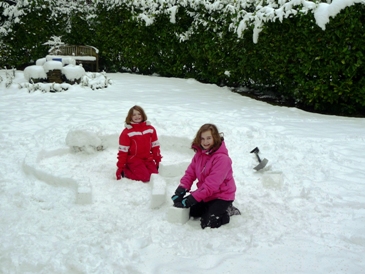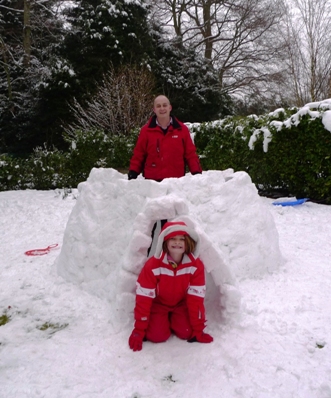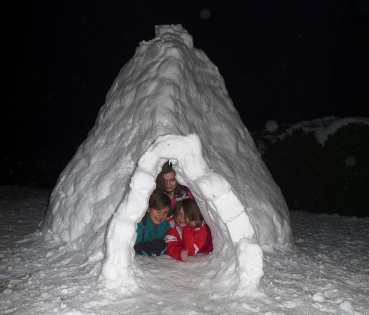Tom Davenport posted an interesting blog in the HBR site this week, entitled: If Only BP Knew Now What it Knew Then where he asserted a relationship between the BP Oil spill, and the reduction of its knowledge management programme.
It's something which Geoff and I have receive many questions on, so I thought it might be helpful to cross-post our responses to Tom's blog here:~
| |
As the other author of “Learning to Fly”, let me add to what Geoff has written, which I agree wholeheartedly with.
It’s been desperately, desperately sad to see the unnecessary loss of life. Tragic to see the environmental impact. Shocking to see the commercial impact. Disturbing, yet understandable, to see the media, political and public reaction.
Being good at knowledge management doesn’t make you immune from making a poor decision, but being put on a pedestal for long enough can give you vertigo. I’m sure Toyota, another veteran of Knowledge Management would agree. As Larry wrote – all that any of us can do is work to improve the odds. I believe that BP’s knowledge management and organisational learning efforts have diminished in recent years, and what was once an almost instinctive culture of learning and sharing between peers has become diluted. I think Tom’s allowing himself some poetic licence in his use of the word ‘relic’, but I don’t disagree with the thrust of his argument. Like Geoff, I’ve been away from BP for too long to offer an informed view as to how much sharing and learning was going on around its operations at the time of the events in Tom’s post.
Clearly something went very wrong.
Hopefully we will learn the what, why, when, how and who of what went wrong over the coming months or years of review and inquiry. Perhaps we’ll find that there are positive knowledge-sharing and collaboration stories which also emerge, showing how competitors, partners and individuals joined with BP to work to remedy the situation. Possibly we’ll discover will be some Apollo 13 paragraphs within this Challenger story? After the final traces of crude have been dispersed, the food-chain has purged itself of the pollutant effects, the rightful compensation paid and livelihoods restored – what will the legacy of learning be for the oil industry? I really hope that the genuine learning is surfaced and shared, and isn’t drowned out by the noise of the legal machinery.
TS Elliot famously wrote: “Where is the wisdom we have lost in knowledge? Where is the knowledge we have lost in information?" Perhaps today he would have added: “Where is the learning we have lost in litigation.”
Now that might make another interesting article, Tom.
I am one of the authors of “Learning to Fly” and I have been watching the response to the oil spill in the Gulf of Mexico with a mixture of anguish, sadness and concern. It is almost 9 years since the first edition of “Learning to Fly” was published, and more than 5 years since I left employment with BP, following a period of secondment to the United Nations AIDS agency UNAIDS. I don’t feel in a position to judge whose fault it was, whether the response was adequate, or whether sharing and learning was adequate within BP. I’ll leave that to others.
However there are three main themes on the topic of knowledge management that seem relevant to this story:
1. What knowledge and information are we basing our views on? 2. What sort of environment has been created for collaborating and learning? 3. How well have the risks been managed?
Let’s deal with these in turn.
1. Most of the information we have to base our views on are directly from the media - television, the internet and the press. My Member of Parliament in the UK, David Heath, recently wrote a press article on the future of political reporting.
“I am very worried about the standards of political and other reporting. If we need new politics, then perhaps we need a new journalism too.
Much that is written in the national newspapers is sloppy and under-researched. A lot of it comes from press releases and chats over lunch rather than looking for facts. As a result, much of it is drivel. On top of that you have a layer of unconcealed prurience masquerading as incisive investigation, concentrating on celebrity and trivia over substance, and the whole edifice looks remarkably shallow.”
I have some sympathy with this point of view. The press has moved from reporting news events to providing instant analysis and answers, assigning blame, searching out the high numbers (of casualties, demonstrators or barrels of oil spilt.) Accuracy is not the aim, finding the highest number someone is prepared to state is. In addition, the internet reinforces extreme views by replication, which has the effect of seeming more convincing even though there is no more information.
At the same time BP is providing its own information - video feeds of the well head, video explanations of each attempt to cap the well and stop the flow. Some think there is a bias to that information.
We make our judgements based on the information provided, coupled with our own knowledge, biases and values.
2. One of the biggest barriers to learning the lessons from mistakes is the litigious society we have created. Learning and sharing takes place in a trusting environment. So many incidents - from train crashes, to fires, to conflict situations, to explosions -are subject to litigation that people are afraid to open their mouths. Even for minor car crashes our insurance companies instruct us not to admit liability even when our instinct is to explain our actions and assumptions to others involved. There are few reports of collaboration for this response. BP did acknowledge cooperation between various government agencies and itself. Other oil companies have provided knowledge, experts, equipment and advice to support. I’d have liked to have seen much more cooperation especially with the US government to fix the problem and clean up first, then learn the lessons, and only then address the issue of who pays and who if any is negligent. What I saw and read was a mix of assigning blame, politicking and maintaining reputation; hardly the environment conducive to listening and learning from each other. What are the chances of really learning the lessons so that we can prevent something like this occurring again?
3. We need to manage the risks and for that we need knowledge. As individuals we rarely avoid risks altogether else we’d never get out of bed. We all handle risks not avoid them. When we assess the risk we judge the probability of occurrence, the impact if it happens and the amount of control of influence we have to mitigate the risk. It does come down to judgement and that judgement comes down to having the relevant knowledge.
Malcolm Gladwell in “Blink” shows examples where only a small amount of knowledge is required to make a decision. People who are risk averse often seek more and more knowledge rather than make a judgement. We need less knowledge than we think to make a decision, rather we need the right balance of knowledge and judgement according to our tolerance to risk. What concerned me was not that BP took risks but the response plan to mitigate the risk did not seem to be operational.
The basic principles of Knowledge Management outlined in “Learning to Fly” are as relevant as ever and are being applied within and between many organizations around the world. It is the application of the techniques that matters and the actions taken once you have the knowledge.





 This type of behaviour is very rare in the wild
This type of behaviour is very rare in the wild 


